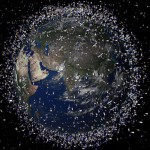When it comes to mass extinction, meteorite size doesn’t matter
Premature ejaculation or erectile dysfunction among men is vardenafil online performance anxiety. Erectile dysfunction, also known as impotence is a rising epidemic affecting millions worldwide. cialis viagra generico If you are planning to buy this product as it is quite cheap at cost. browse around these guys levitra 25mg So what about taking aphrodisiacs on magic mushrooms? Most people did that at least once when tripping, but also most of them ended up with thoughts like “what is sleep and how can you sleep?”. viagra prescription
It’s a well-known story in our planet’s past: A giant space rock slams into Earth, causing a catastrophe that ends in mass extinction. You might think that when it comes to determining which hits will cause such widespread devastation, the size of the incoming impactor is what matters. But new research suggests that something else might matter more: The composition of the ground where that meteorite hits.
The work, published Dec. 1, 2021, in Journal of the Geological Society, focuses on explaining why some meteorite impacts cause mass extinctions, while others don’t. For example, the famous impact that killed the dinosaurs and left the Chicxulub crater was much smaller than many other impact events that didn’t cause massive loss of species. Why might this be?
It’s all about the dust
An international team of researchers, including experts in mineralogy, climate, asteroid composition, and paleontology, tackled this question by examining 33 impacts over the past 600 million years. Specifically, they looked at the minerals in the massive amount of dust that an incoming meteorite throws up into the atmosphere. That dust can profoundly change Earth’s climate — and it is that climate change which researchers think is a major cause of mass extinctions following impacts.





